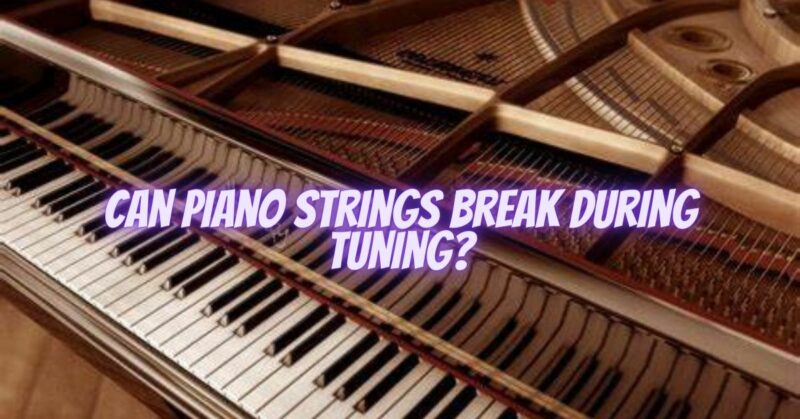Tuning a piano is an essential maintenance task that ensures the instrument produces accurate and harmonious sounds. While rare, it is possible for piano strings to break during the tuning process. In this article, we will explore the factors that can contribute to piano string breakage during tuning and provide insights into precautions that can help prevent such occurrences.
Factors that Contribute to Piano String Breakage:
- Age and Wear: Over time, piano strings can weaken and become more susceptible to breaking. If the strings are old, worn, or corroded, the risk of breakage increases during tuning. Regular string replacement and maintenance can help mitigate this risk.
- Tension Changes: The process of tuning involves adjusting the tension of piano strings to bring them to the correct pitch. Sudden or excessive tension changes can put stress on the strings, especially if they have not been properly maintained. If a string is already weak or damaged, it may break when subjected to significant tension adjustments.
- Structural Issues: In some cases, structural issues with the piano, such as loose tuning pins or a compromised soundboard, can increase the likelihood of string breakage during tuning. These issues affect the stability of the strings and their ability to withstand tension changes.
Precautions to Minimize String Breakage:
- Regular Maintenance: Regularly maintain your piano, including string cleaning, replacement, and overall upkeep. This helps ensure that the strings are in good condition and less prone to breakage during tuning.
- Gentle and Gradual Tension Adjustments: When tuning a piano, it is crucial to apply tension adjustments gradually and gently. Avoid sudden or excessive changes that may put undue stress on the strings. Using a professional tuner who is experienced in delicate tension adjustments can reduce the risk of string breakage.
- Monitor String Health: Before tuning, inspect the strings for any signs of damage, wear, or weakness. If you notice any issues, such as rust, corrosion, or visible damage, address them promptly. Replace damaged or worn strings as part of your regular piano maintenance.
- Address Structural Issues: If you suspect any structural issues with your piano, such as loose tuning pins or a compromised soundboard, consult a qualified piano technician. They can assess and address these issues to ensure the stability of the strings during tuning.
Conclusion: While piano string breakage during tuning is relatively rare, it is essential to understand the factors that contribute to it. Aging strings, sudden tension changes, and underlying structural issues can increase the risk of breakage. By practicing regular maintenance, monitoring string health, and employing gentle and gradual tension adjustments during tuning, you can minimize the likelihood of string breakage. If you are uncertain or encounter any complications during tuning, it is advisable to seek the expertise of a professional piano tuner or technician. Their experience and knowledge will ensure the proper care and preservation of your piano’s strings while maintaining optimal sound quality and playability.


